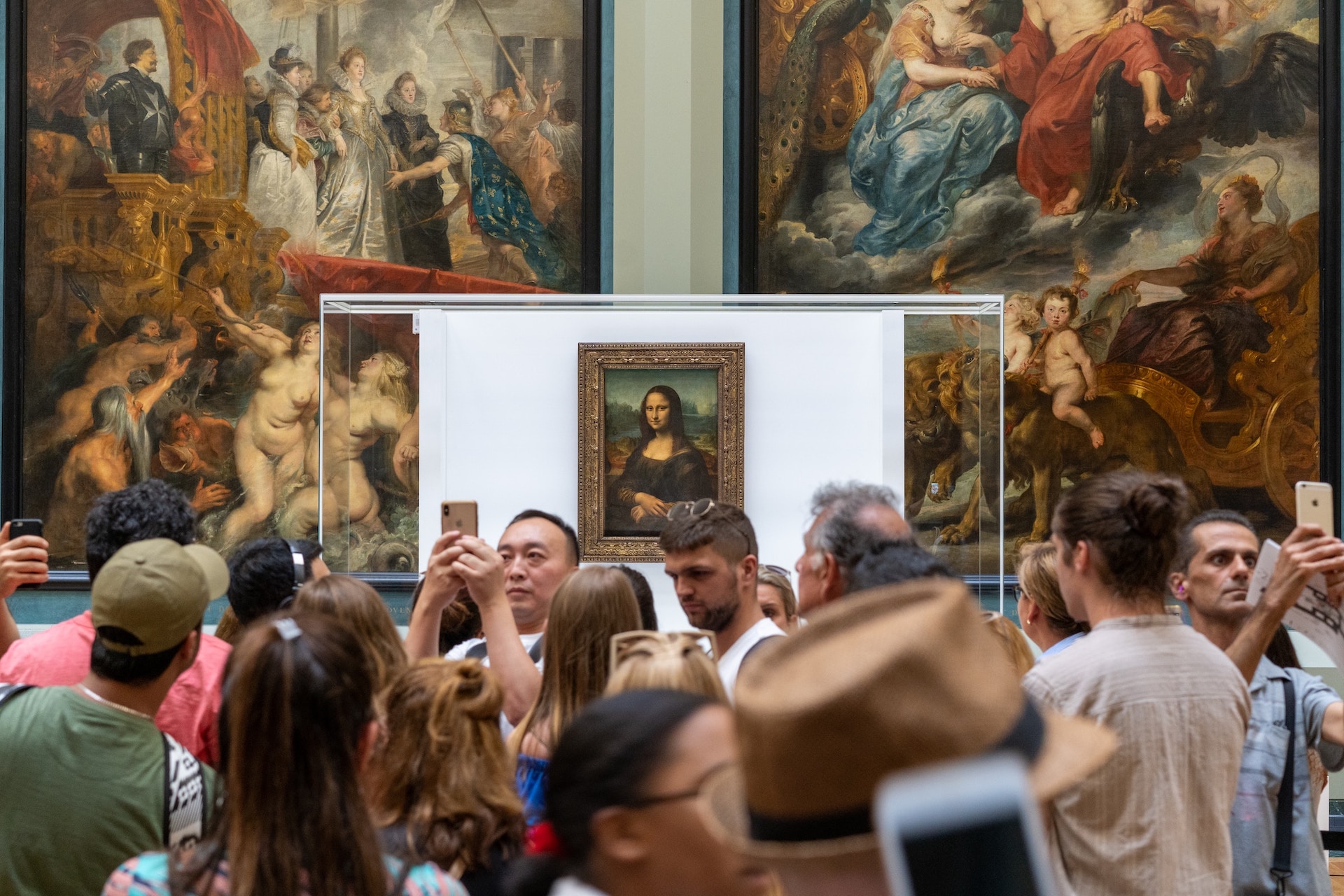While many thousands of people are waiting for the peloton on the Champs-Élysées today, other big groups of people are wandering through the Louvre Museum. There is a lot to see but most people come to see a painting called Mona Lisa. It’s not a big painting. It’s also not super spectacular but it is one of the best-known paintings in the world. A brazen theft over 100 years ago played a role in its fame.
If you were standing outside the Louvre in Paris on the morning of August 21, 1911, you might have noticed three men hurrying out of the museum. The three Italian handymen had just spent the night in an art-supply closet inside the museum to pull off a rather big heist.
On that August morning, with the Louvre still closed, they slipped out of the closet and lifted a painting, its frame, and protective glass case off the wall. They then stripped the painting of its frame and case. The wooden canvas was then covered with a blanket and hustled off to the Quai d'Orsay station. There the trio boarded a 7:47AM express train out of Paris. The Mona Lisa joined them on their journey.
Before its theft, the Mona Lisa was not widely known outside the art world. Leonardo da Vinci painted it in 1507 but it wasn't until the 1860s that critics began to hail it as a masterwork of Renaissance painting, although still mostly within the French scene.
Dorothy and Tom Hoobler wrote about the painting's heist in their book, The Crimes of Paris. It was 28 hours, they say, until anyone even noticed the four bare hooks. Visitors thought it was taken away to have photos taken, like for all artifacts in the extensive collection.
After the Louvre announced the theft, newspapers all over the world ran headlines about the missing masterpiece. After a weeklong shutdown, the Louvre re-opened to mobs of people. They all rushed to see the empty spot that had become a "mark of shame" for Parisians.
Meanwhile, the thieves had made a clean getaway. They were two brothers, Vincenzo and Michele Lancelotti, and their leader, Vincenzo Perugia. He was a handyman who had worked for the Louvre to install the protective glass for the Mona Lisa.
Perugia hoped to sell the painting but the heist had received so much attention that the Mona Lisa was simply not sellable. He could have returned it and receive a reward but Perugia was afraid to get arrested. He stashed it in the false bottom of a trunk in his Paris boarding house.
Twenty-eight months after he stole it from the Louvre, Perugia finally made an attempt at selling the painting to an art dealer in Florence but the dealer was suspicious. He called a colleague to take a look and a stamp on the back confirmed the authenticity of the Mona Lisa. They told Perugia they would get back to him with an estimate but not even 30 minutes after he returned home, the police were at his door.
Perugia said he had wanted to bring the painting home to Italy after, according to him, Napoleon had stolen it. The Mona Lisa was returned to Paris and the thief only got an eight-month prison sentence.
Did we do a good job with this story?



